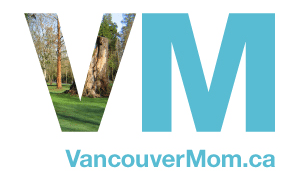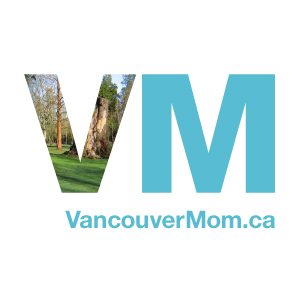A Different Kind of Back to School: Barbara Arrowsmith-Young

Parents all across Vancouver are working hard, getting their kids ready to head back to school in a few weeks. Amidst shopping for clothes and school supplies, working out childcare and work arrangements, and squeezing the last bit of fun out of summer, we’re all wondering how our kids will fare in the coming school year. Will they like their teachers? Will they have friends? Will they get good grades?
When Back to School Doesn’t go Well
 When Barbara Arrowsmith-Young started school in the mid-1950s, things didn’t go well for her. As early as grade one her teachers said she had a “mental block”. She says, “I literally pictured a block of wood in my head.” Today she would have been diagnosed with a learning disability, but that term didn’t come into wide use until the 1970s. She printed everything backwards, she had a hard time with reading comprehension, and she really struggled to keep up with her classmates. Her mother, who was a teacher, created flashcards for her. Through hard work and a lot of memorization, she was able to make it through high school. But when she was doing her Masters degree in School Psychology in 1978, things came to a head. “I didn’t see how I could go on,” she said, “I was literally suicidal.”
When Barbara Arrowsmith-Young started school in the mid-1950s, things didn’t go well for her. As early as grade one her teachers said she had a “mental block”. She says, “I literally pictured a block of wood in my head.” Today she would have been diagnosed with a learning disability, but that term didn’t come into wide use until the 1970s. She printed everything backwards, she had a hard time with reading comprehension, and she really struggled to keep up with her classmates. Her mother, who was a teacher, created flashcards for her. Through hard work and a lot of memorization, she was able to make it through high school. But when she was doing her Masters degree in School Psychology in 1978, things came to a head. “I didn’t see how I could go on,” she said, “I was literally suicidal.”
By chance, Arrowsmith-Young happened to read about neuroplasticity. It’s a big word, but what it means is that you can literally change your brain at the physical level. In the process, you can learn how to compensate for weaknesses. She decided to see if she could change her brain, and she started an intense, self-imposed training program using clocks. Even though she was in graduate school, she struggled to tell the time, because she couldn’t understand the relationship between the hands. She worked hard, for up to 10 hours a day, though, gradually increasing the difficulty. After three or four months, she started to notice a difference – and not just in her ability to tell time. As the pathways in her brain grew stronger, she could use them for a variety of tasks. She did manage to literally change her brain.
Setting up her own School
 Drawing from her own experience, Arrowsmith-Young realized that other people needed help, as well. She didn’t want them to dread going back to school like she had. In 1980 she opened her first school in Toronto. The Arrowsmith Program, which was honed at the school, addresses 19 different cognitive functions. It’s aimed at stimulating and strengthening the part of the brain that needs help, rather than compensating for the weakness. Students attend the school full time, from 8:45am-3:15pm daily. They spend at least half their time engaging in cognitive exercises to help them change their brains as Arrowsmith-Young changed hers. The rest of the time is spent on literacy and numeracy. Most students spend three to four years at her schools, before returning to their original public or private schools. Once their brains have been strengthened, they stay that way, and most of them quickly make up for any lost time.
Drawing from her own experience, Arrowsmith-Young realized that other people needed help, as well. She didn’t want them to dread going back to school like she had. In 1980 she opened her first school in Toronto. The Arrowsmith Program, which was honed at the school, addresses 19 different cognitive functions. It’s aimed at stimulating and strengthening the part of the brain that needs help, rather than compensating for the weakness. Students attend the school full time, from 8:45am-3:15pm daily. They spend at least half their time engaging in cognitive exercises to help them change their brains as Arrowsmith-Young changed hers. The rest of the time is spent on literacy and numeracy. Most students spend three to four years at her schools, before returning to their original public or private schools. Once their brains have been strengthened, they stay that way, and most of them quickly make up for any lost time.
Most of the students who enter the Arrowsmith Program have been struggling in school due to learning disabilities. Some are as young as six, others are adults. For the children and their parents, it’s a solution to the back to school blues that they haven’t been able to find anywhere else. Many of the kids are years behind their peers in certain subject areas, because their learning disabilities have seriously interfered with their progress. Others have managed to compensate for their struggles until, eventually, they realize that they can’t anymore and they really need to address the issue. Arrowsmith-Young believes that you’re never too old to strengthen your brain – her oldest student was 74 years old, and made great progress.
A Leading Edge Program
 When Barbara Arrowsmith-Young started her research into neuroplasticity the idea was somewhat controversial. How could performing neural exercises in one area help you to improve in other areas altogether? However, as research has advanced, the idea has gained much more credibility. While it’s still fairly leading-edge, Arrowsmith-Young says that it’s now much more widely-accepted. The innovative approach comes as welcome news to many families, who have found traditional approaches to helping kids deal with learning disabilities to be lacking.
When Barbara Arrowsmith-Young started her research into neuroplasticity the idea was somewhat controversial. How could performing neural exercises in one area help you to improve in other areas altogether? However, as research has advanced, the idea has gained much more credibility. While it’s still fairly leading-edge, Arrowsmith-Young says that it’s now much more widely-accepted. The innovative approach comes as welcome news to many families, who have found traditional approaches to helping kids deal with learning disabilities to be lacking.
If heading back to school is filling you and your kids with dread, and nothing you’ve tried so far has helped, you may want to look into the Arrowsmith Program. Here in Vancouver the Eaton Arrowmith School operates campuses at UBC and in White Rock. They offer regular information sessions where you can learn more, and decide if this is a good fit for your child. You can also learn more by reading Arrowsmith-Young’s book, The Woman who Changed her Brain.
Amber Strocel is a writer, aspiring math teacher, suburbanite, wife and mom of two. She believes in the power of the Internet to connect people, and she believes that numbers are the poetry of the universe. You can often find her knitting, sewing, volunteering, working in her garden, and sneaking chocolate when no one's looking. She blogs at Strocel.com and shares her photos on Instagram as @AmberStrocel.

















